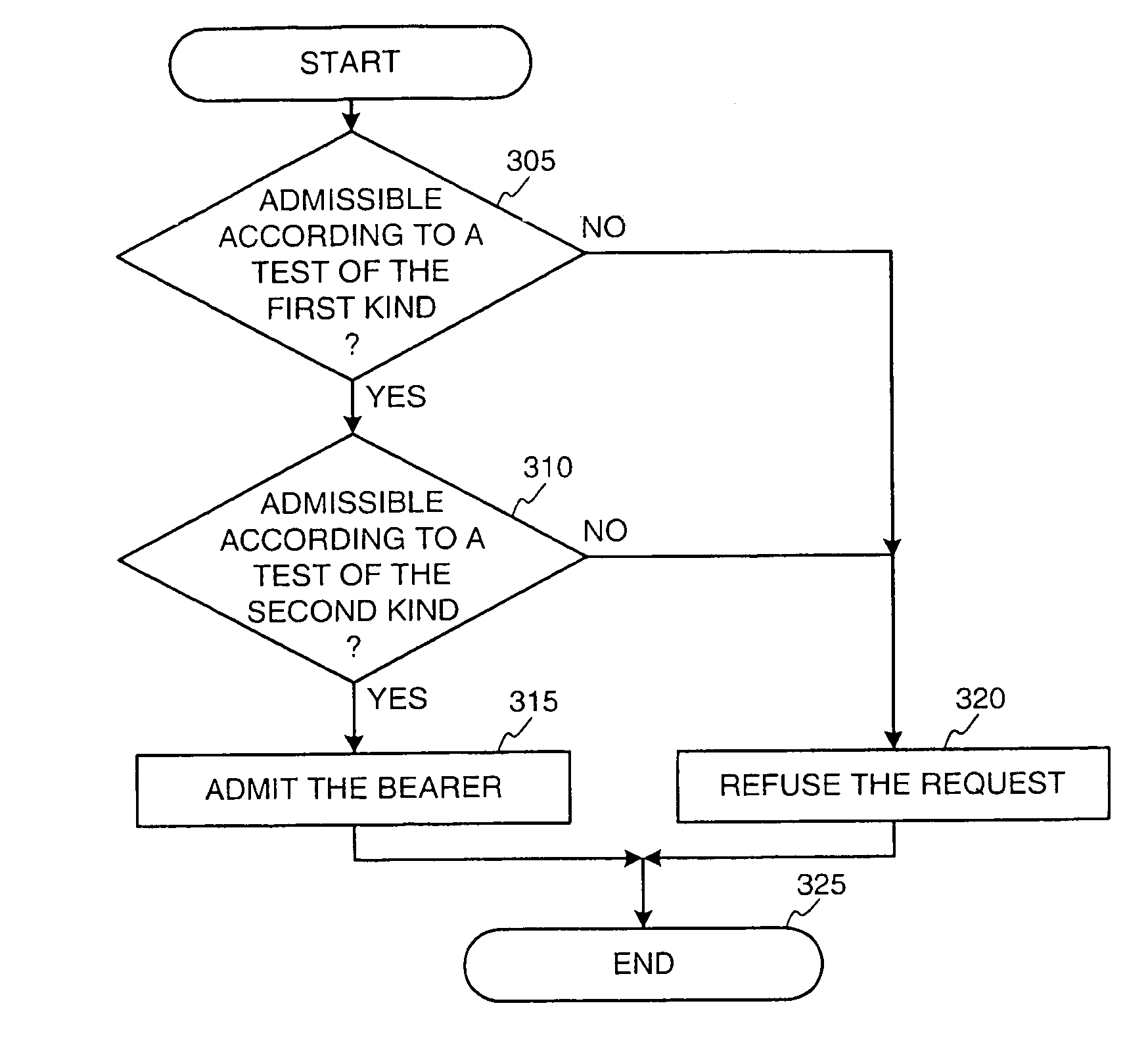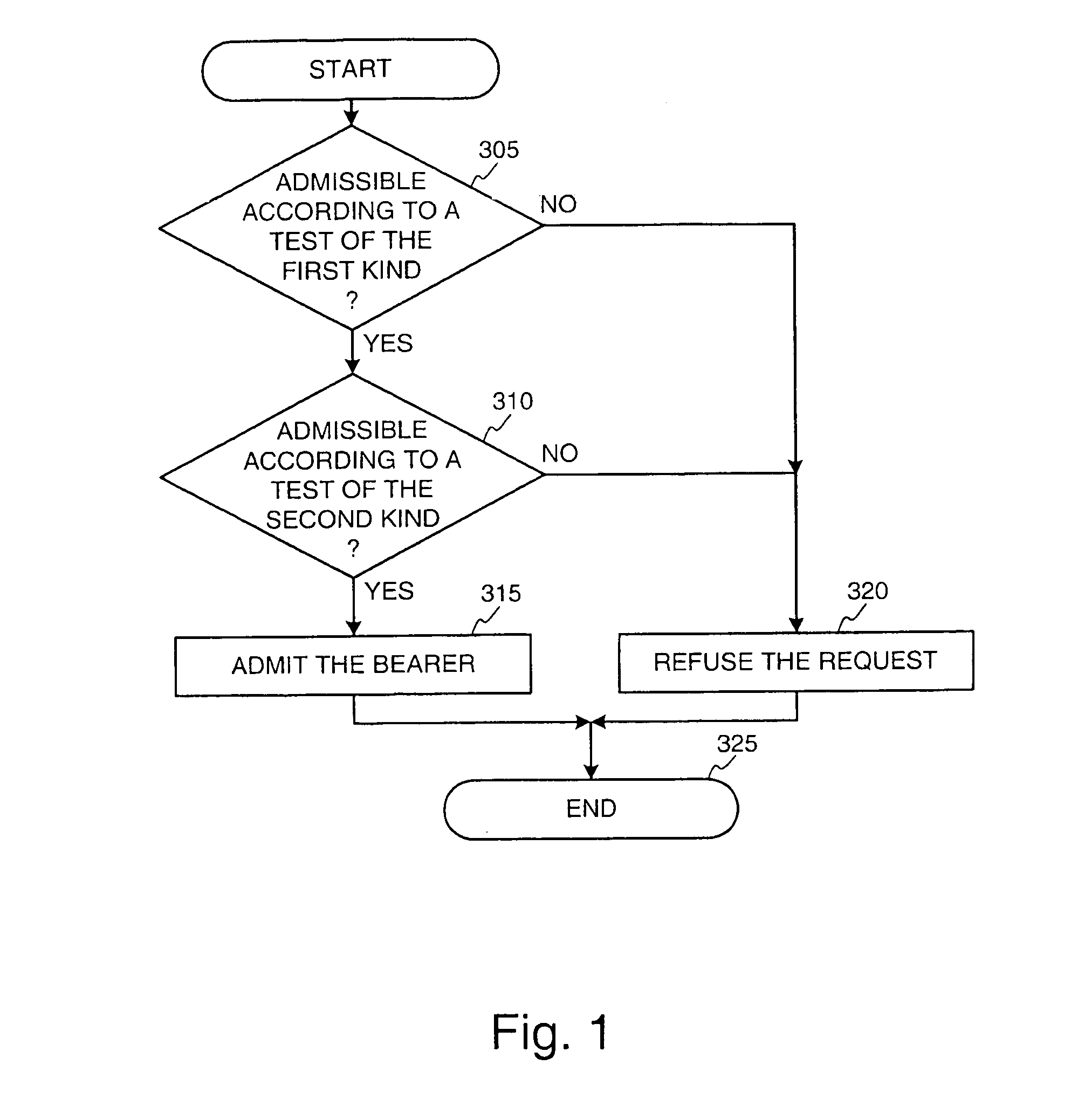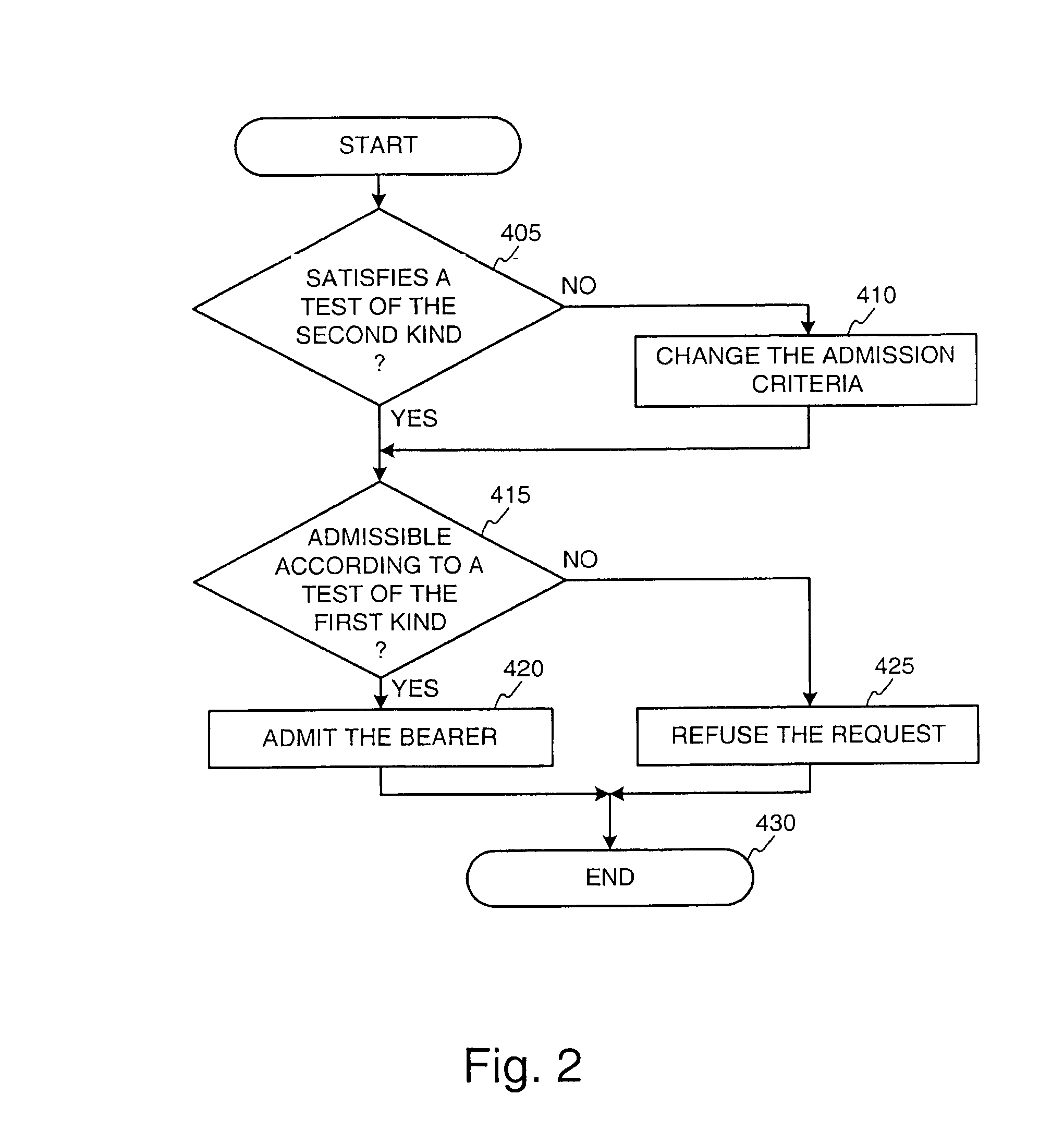Admission control method
a technology of admission control and ad-hoc control, which is applied in the field of radio resource usage in cellular telecommunication systems, can solve the problems of high bit rate bearer, too much interference, and inability to operate well, and achieve the effect of high load on the network and efficient handling of both uneven and skewed traffi
- Summary
- Abstract
- Description
- Claims
- Application Information
AI Technical Summary
Benefits of technology
Problems solved by technology
Method used
Image
Examples
Embodiment Construction
[0023]First, let us define some terms. In the following specification, non-controllable traffic means that part of the traffic in a cellular telecommunications system, which the network is required to transmit. Non-controllable traffic comprises real time (RT) bearers and the traffic caused by the minimum bit rate requirement of non-real-time (NRT) bearers. Controllable traffic comprises such traffic, which the network may transmit or whose transmission the network may delay according to available capacity. Controllable traffic comprises mainly the part of the traffic caused by NRT bearers, which is above the minimum required bit rate. Preferably, non-controllable traffic is used as a basis of predictions since controllable load can be adjusted according to changing new situations. In the following specification, the term control region means a cell, a sector of a cell or any other area under active power and admission control by a single entity. Typically, a control region comprise...
PUM
 Login to View More
Login to View More Abstract
Description
Claims
Application Information
 Login to View More
Login to View More - R&D
- Intellectual Property
- Life Sciences
- Materials
- Tech Scout
- Unparalleled Data Quality
- Higher Quality Content
- 60% Fewer Hallucinations
Browse by: Latest US Patents, China's latest patents, Technical Efficacy Thesaurus, Application Domain, Technology Topic, Popular Technical Reports.
© 2025 PatSnap. All rights reserved.Legal|Privacy policy|Modern Slavery Act Transparency Statement|Sitemap|About US| Contact US: help@patsnap.com



